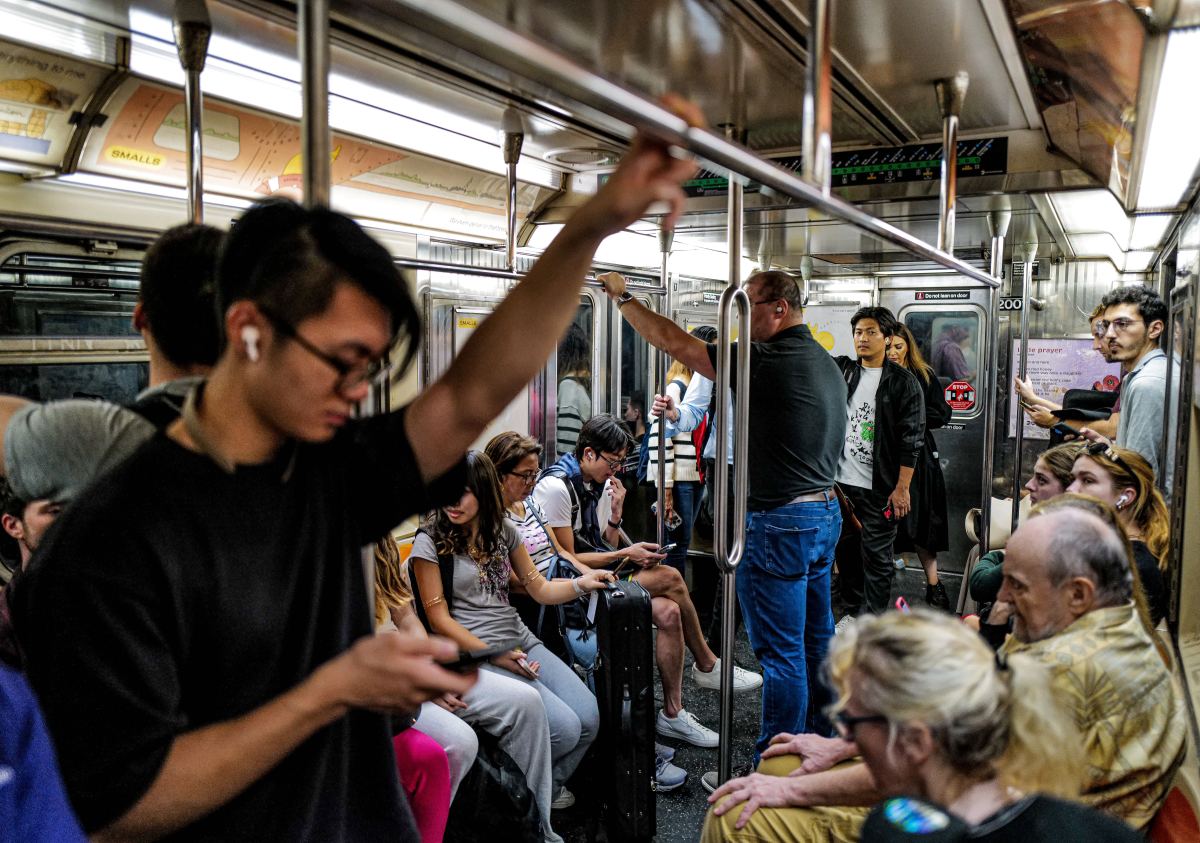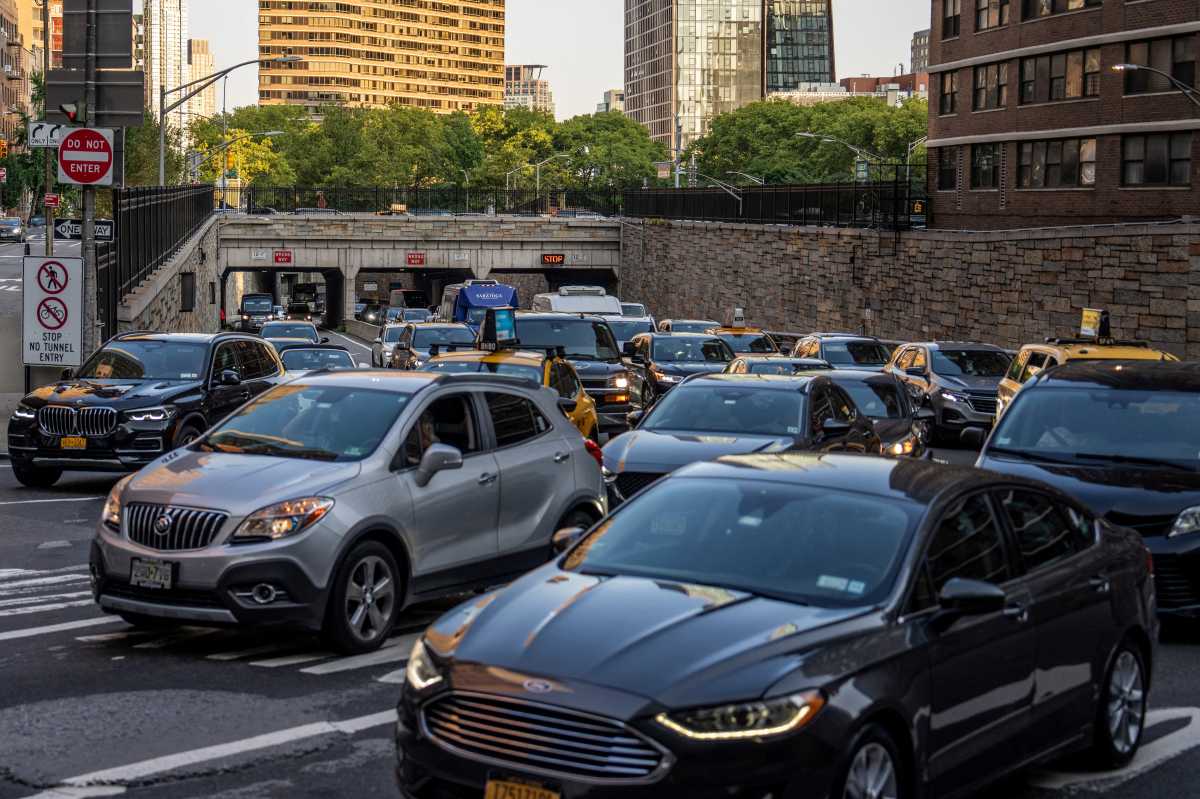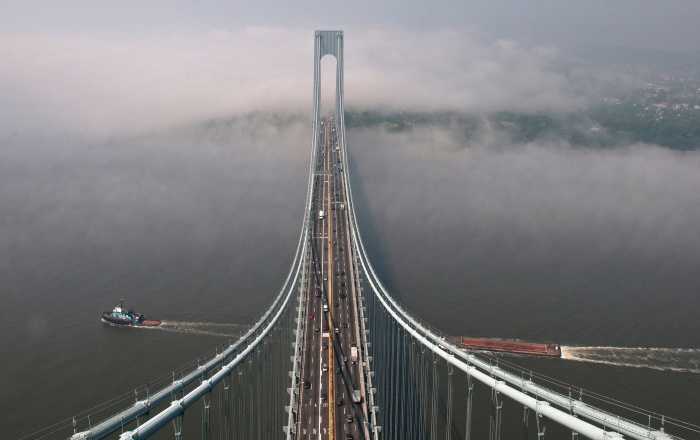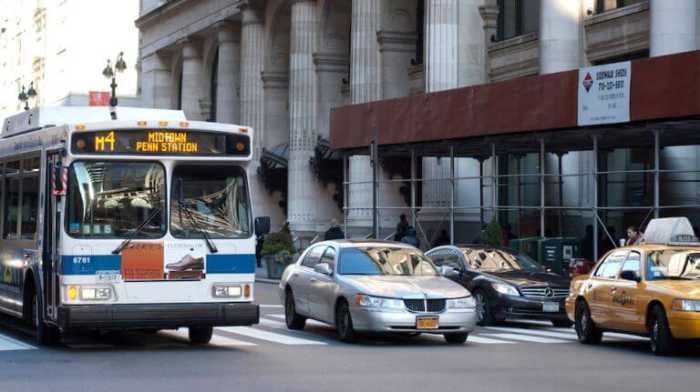The number of people traveling in and out of New York City by car is higher than ever before, even as mass transit ridership continues to lag behind levels seen before the COVID-19 pandemic, a new report on MTA finances from State Comptroller Tom DiNapoli revealed.
Crossings on the MTA’s seven bridges and two tunnels across New York City climbed to 335 million in 2023, already a record, and are expected to hit 339 million in 2024, according to DiNapoli’s report. That comes even as paid weekday ridership on the subway still hovers at around 70% of pre-COVID averages, with higher numbers registered on weekends, suggesting a permanent shift to working from home even as New Yorkers take transit for personal activities.
Even worse, MTA ridership over the next several years is expected to recover still more slowly than officials once projected: in November 2020, consulting giant McKinsey & Company predicted ridership would rise to 86% of pre-COVID levels by 2026, but MTA brass now concede it will likely average only 80% by that time.

Sluggish ridership recovery has the potential to seriously strain MTA finances, notes the state’s moneyman: the MTA’s operating budget, used for payroll and day-to-day expenses for transit service, could see deficits as high as $652 million by 2028, which could require painful service cuts or fare hikes should it not be resolved.
“A year ago, the MTA was looking forward to a period of solid fiscal health, but its financial condition has quickly turned from stable back to uncertain,” DiNapoli said in a statement. “Paid ridership is not coming back as fast as the MTA hoped. With farebox and tax revenues down, a pause on congestion pricing and other financial risks, significant operating budget gaps could again be on the horizon. This is a very real and troubling possibility.”
The MTA is already expected to increase transit fares to over $3 next year, part of a new plan to increase the price of a tap biennially. Even so, the increase in toll revenue is not expected to make up for losses projected at the farebox, necessitating over $800 million in service cuts through 2027, notes DiNapoli.
Other strains on finances include record overtime spending, reaching $1.4 billion in 2023; lower-than-projected real estate tax receipts; and increasing levels of fare evasion, which is expected to cost the authority $800 million in foregone revenue this year.
Also twisting the screws is the pause on congestion pricing. The revenue from the indefinitely-paused Manhattan toll plan was to go towards long-term capital spending rather than day-to-day expenses, but by deferring critical repairs and revamps set to be funded by the program, the MTA expects to spend more money on maintenance over the next decade fixing older and defective equipment, to the tune of hundreds of millions of dollars each year.
“We value input from the Office of the State Comptroller, and the risks identified in their report are consistent with what we are actively managing and have discussed publicly at our Board meetings,” said John J. McCarthy, the MTA’s Chief of Policy and External Relations. “We have achieved considerable operating savings and we’re committed to doing even more.”
Read More: https://www.amny.com/nyc-transit/






































